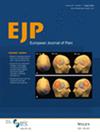Opioid Use and Prescription Opioid Use Disorder: Biopsychosocial Characterisation of a Clinical Chronic Pain Cohort
Abstract
Background
This study aimed to examine: (a) characteristics associated with long-term opioid use and (b) characteristics associated with problematic opioid use, here defined as prescription opioid use disorder (P-OUD), in patients referred to specialised pain care.
Methods
This cross-sectional study utilised baseline data from a clinical chronic pain cohort. Eligible participants included adults > 18 years old, not undergoing cancer treatment, had pain > 3 months, and had been referred to a specialised pain care centre in Sweden. Bivariate logistic regression and multivariable logistic regression with forward selection were used to examine the associations between biopsychosocial variables and either long-term opioid use or P-OUD.
Results
Of the 339 patients included, 194 (57%) were using opioids, 159 (47%) had long-term opioid use (> 90 days), and 34 (21% of those with long-term opioid use) had P-OUD. Longer pain duration, unemployment, more pain catastrophising, lower health-related quality of life, and worse balance increased the likelihood of long-term opioid use. Long-term use of high doses was associated with a greater prevalence of psychiatric and cognitive-behavioural problems compared to long-term use at low to moderate doses. Long-term opioid use, younger age, trauma exposure, more pain catastrophising, and fear of movement increased the likelihood of P-OUD.
Conclusions
Our results demonstrate the importance of identifying and treating salient factors that may sustain both the pain condition and long-term opioid use. Many of the biopsychosocial variables associated with long-term opioid use and P-OUD can be addressed within interdisciplinary pain management and rehabilitation programmes.
Significance
This study is part of the U-PAIN cohort study on a clinical sample from a highly specialised pain centre in Sweden. It is based on a deep and thorough characterisation of patients referred to the clinic to evaluate risks and benefits of opioid therapy in chronic pain. It adds valuable information on the complexity of opioid therapy in chronic pain; the results highlight the need for interdisciplinary multimodal evaluation and treatment.


 求助内容:
求助内容: 应助结果提醒方式:
应助结果提醒方式:


